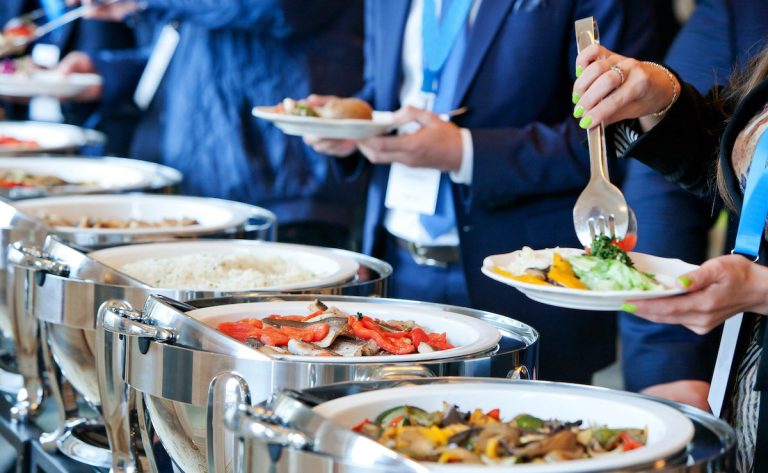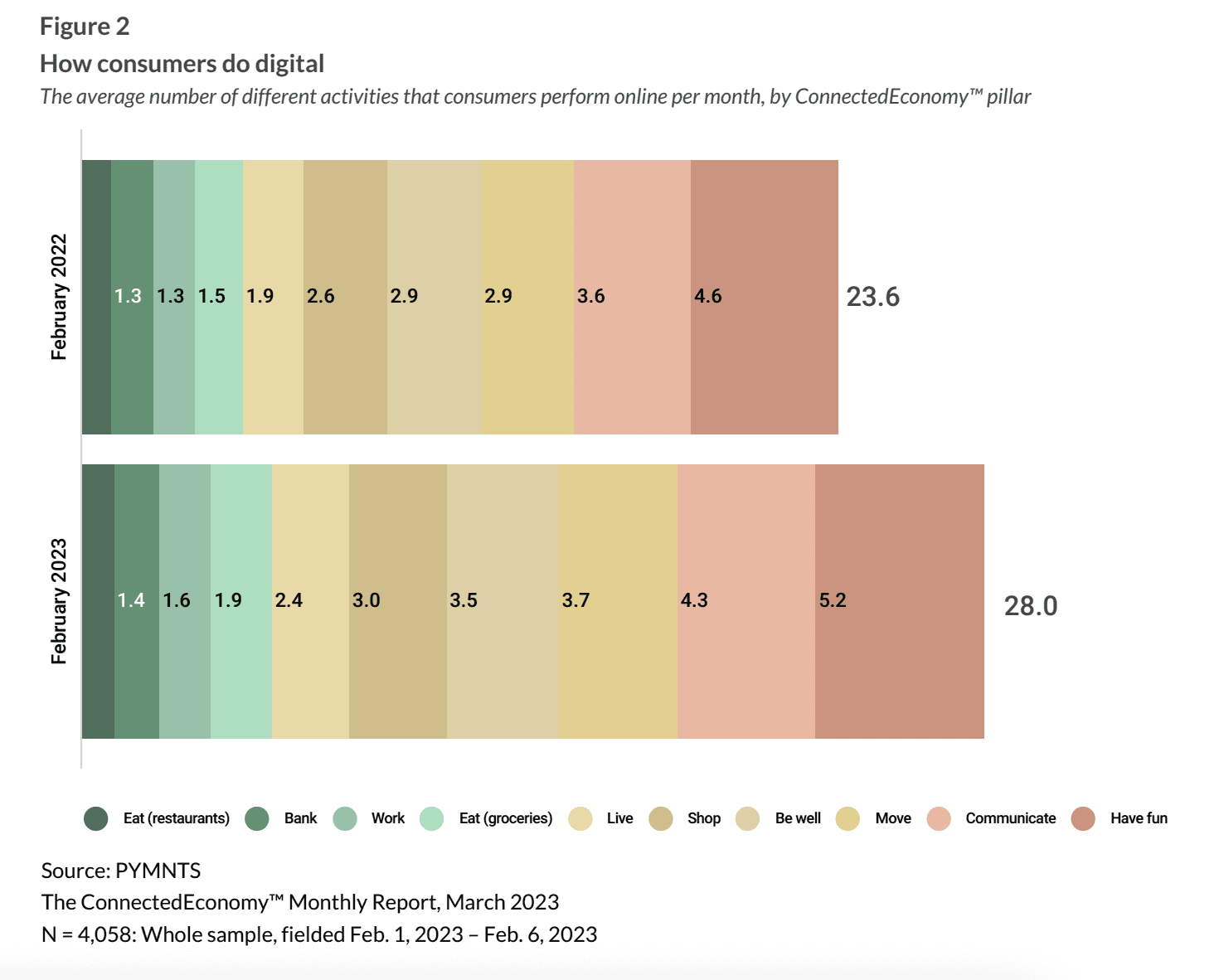Decline in WFH Poses Opportunity for Corporate Catering

With remote work declining, food businesses are seizing the chance to reclaim offices’ meal spending.
By the Numbers
While most digital activities are becoming more popular, work from home (WFH) is the rare exception.
Research from the latest edition of PYMNTS’ ConnectedEconomy™ series, “ConnectedEconomy™ Monthly Report: The Evolving Digital Daily Edition,” which drew from a February survey of more than 4,000 U.S. consumers, observed the highest level of digital engagement in the 15 months on record, with 47% of consumers participating in the digital activities we track. However, the share of consumers that stated that they work remotely day to day fell from 26% last year to 23%.

The Context
Consequently, the in-office meal occasion is returning, and restaurants, grocers and catering companies alike are rushing in to provide corporate meal solutions.
Restaurant technology platform Olo announced a partnership Tuesday (April 4) with catering delivery firm DeliverThat to enable its customers to offer catering options. The delivery firm has been fulfilling Olo orders since January, and early deployments of this integration have been successful.
Last month, fast-casual brand Sweetgreen, which has nearly 200 locations across the U.S., launched its catering program, targeting the in-office corporate meal occasion.
Last fall, DoorDash, the top restaurant aggregator in the U.S., announced upgrades to its corporate catering options. In fall 2021, leading grocery aggregator Instacart acquired catering software company FoodStorm, and last summer, the company announced it had integrated its technology, powering catering orders and delivery for grocers both through the aggregator’s marketplace and through its white-label fulfillment solutions.
In an interview with PYMNTS, Stefania Mallett, CEO and co-founder of online catering marketplace ezCater, said catering for employees can be key to getting them into the office where on-site work is optional. In cases where firms need to sell their goods or services to external clients, catering those meetings can be a key draw.
“Today, employee lunch in many sectors is getting awfully close to a requirement as a retention tool,” Mallett said.